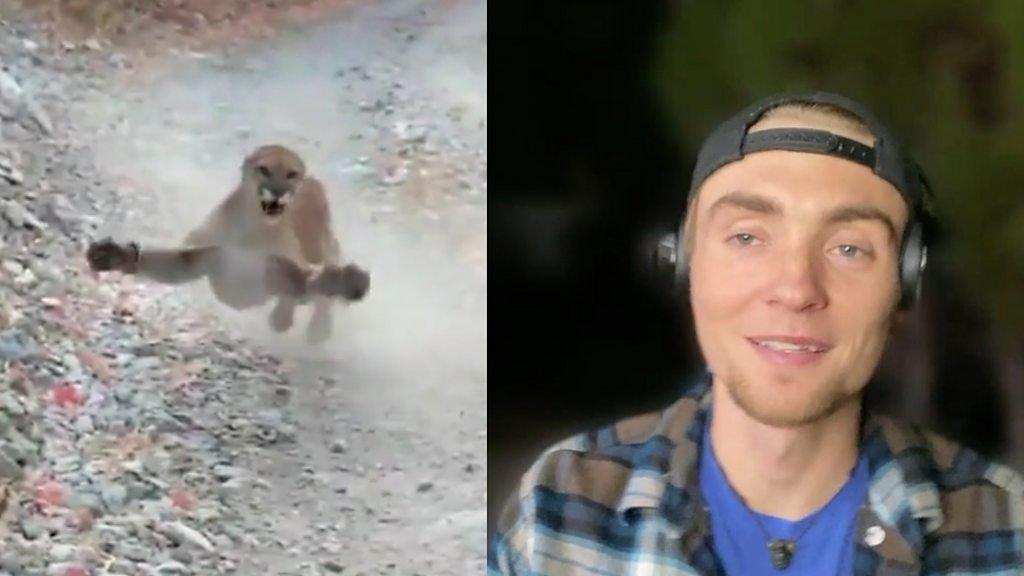P-22, Hollywood's celebrity mountain lion, ends his reign
- Published
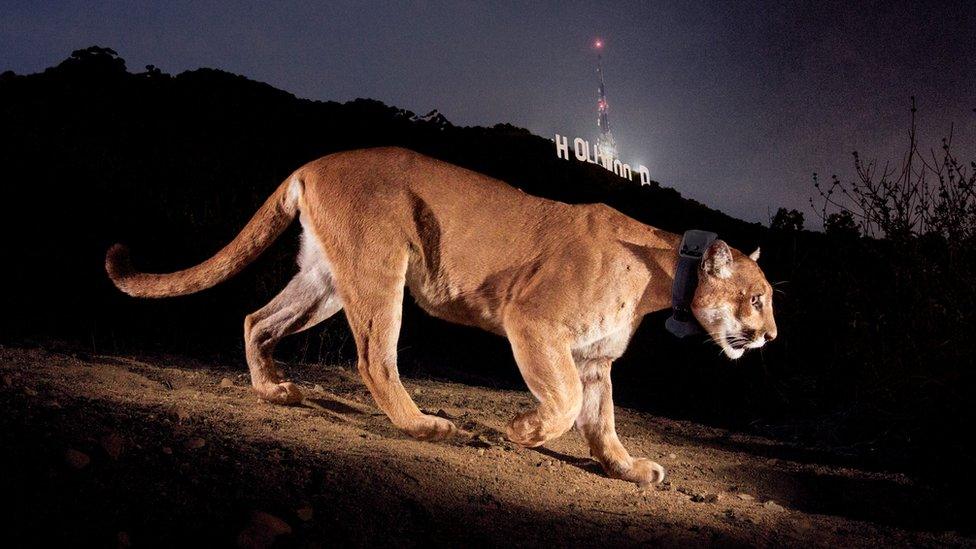
Steve Winter's photo captures P-22 in his adopted urban home
It was late at night in Los Angeles, and artist Corie Mattie had indulged in a glass or two of wine when she heard something outside her home.
At first she thought her brother's Labrador retriever had got out, so she went to let him in.
It was not a chocolate lab.
"It was a [expletive] mountain lion," Ms Mattie said.
And not just any mountain lion - but the most famous mountain lion in Hollywood, and arguably the world.
His name is P-22 and the March encounter left an indelible mark, Ms Mattie said.
His green eyes glowed straight at her. She stared back. She took a quick video before hiding inside, and P-22 lingered until dawn, when he quietly made his exit over a lattice fence.
"He touched my soul. He could have destroyed me, and he didn't," she said. "It escalated quickly to my spirit animal. It went from zero to one hundred, really quick."
Ms Mattie was not the first Angeleno P-22 had bewitched, but residents can no longer look forward to magical encounters with the mysterious beast.
On Saturday, the hearts of P-22's fans were shattered when the California Department of Fish and Wildlife announced that, due to his old age and a host of serious heath issues, the legendary feline was humanely put to sleep. Officials called it "the most difficult, but compassionate choice."
He has had the city in his thrall since 2012, when he somehow managed to get across two deadly freeways and take up residence in Griffith Park, a 4,200-acre mountain in the heart of one of the world's biggest concrete jungles.
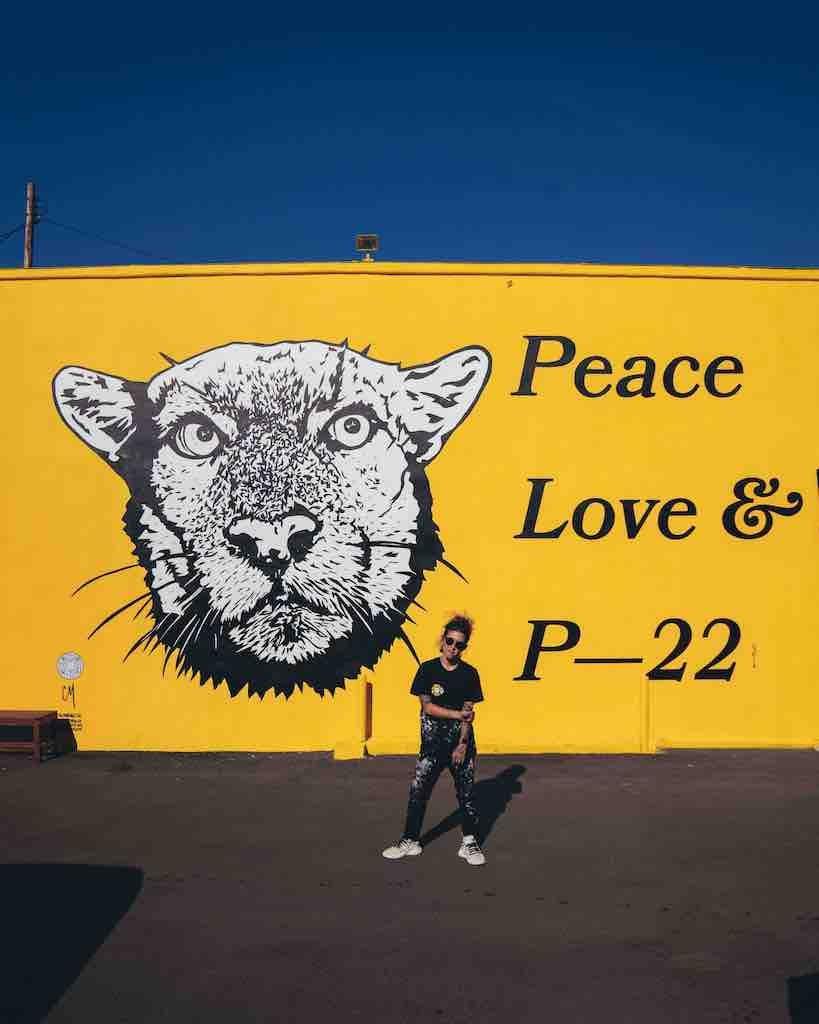
Corie Mattie, an artist also known as LA Hope Dealer, stands in front of a mural she painted in Los Angeles’ Silver Lake neighbourhood that features P-22
Since then, his charisma and curious choice of city habitat have made him a local folk hero. His plight - trapped in an urban island with no possibility of finding a mate - also made him the face of a movement to protect the threatened species.
Though he will no longer prowl through the heart of Los Angeles, his decade-long reign has cemented his status as a Hollywood star as bright as any on the big screen.
A star is born
Griffith Park is minuscule compared to a mountain lion's typical average range of 150 sq miles. Yet like many city-dwellers, P-22 was willing to sacrifice space for a prime location.
He was first discovered in February 2012, when Miguel Ordeñana, a biologist who had set up camera traps in the park, was checking overnight footage.
"All of a sudden this massive puma butt comes across my computer screen!" Mr Ordeñana recalled.
At first he could not believe it, but a subsequent photo confirmed that the park had an exciting new resident.
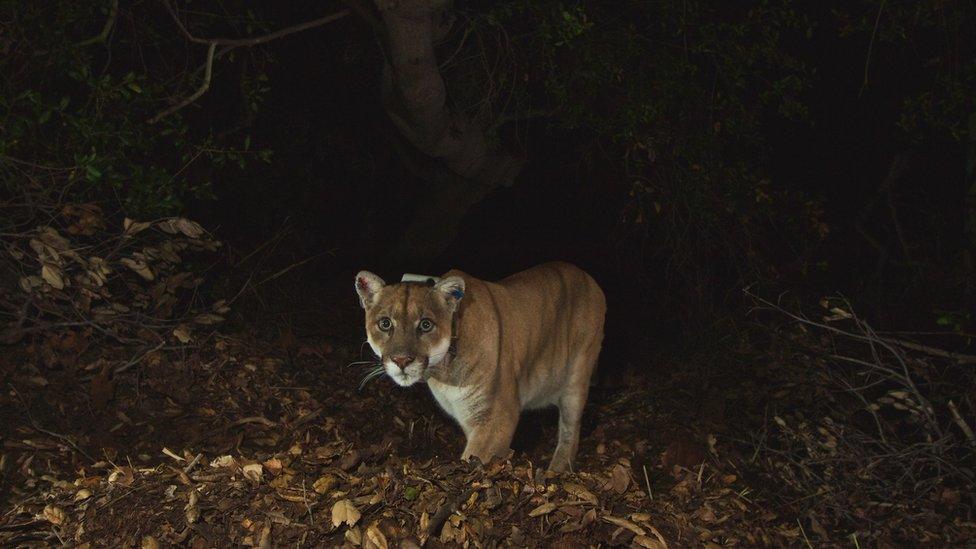
The feline captured on camera
By August, P-22 got his first profile in the LA Times.
The big cat captured the imagination of famed nature photographer Steve Winter, who set up a camera trap beneath the Hollywood sign. He waited over a year before P-22 sauntered into the frame.
The photo got a spread in National Geographic, and a star was born.
"It gave people hope, because they're living in this big urban area, and they have this park they walk into that was actually wild with a California cougar," Mr Winter said. "He became a celebrity in the city of celebrities."
A decade of P-22 escapades ensued. He gave a repairman a fright in 2015 when he hid in a crawl space below a Los Feliz home. He was occasionally spotted on doorbell and park cameras, looking regal, even cute, as he feasted on a deer he'd just slaughtered. The city loved him so much that they forgave him when he (probably) killed a koala at the LA Zoo. Los Angeles has declared 22 October "P-22 Day".
But he also came to symbolise a much darker reality for California's mountain lions.
Local prey - coyotes, raccoons, and other small animals - are laced with the rat poison that has become ubiquitous around Los Angeles.
In 2014, camera traps spotted P-22 looking ill and officials hauled him in for treatment. A mugshot of P-22 looking grizzled and bemused quickly went viral, but the cause was no joke. He was found to be full of rat poison and consumed by mange - conditions that kill most mountain lions.
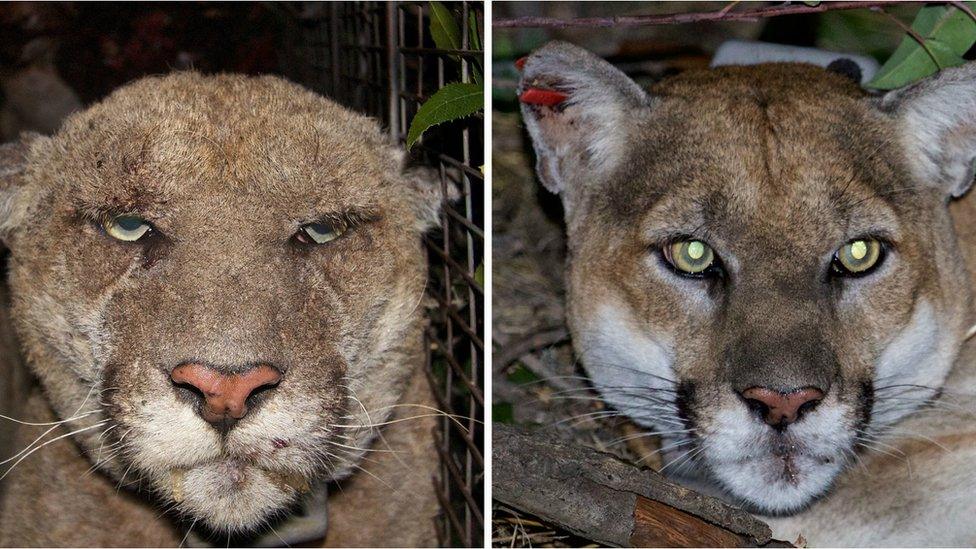
In 2014, P-22 suffered from mange (left image)
The specie's habitats have been choked off by California's freeways. Though as many as 6,000 mountain lions live in California, researchers believe the population in the Santa Monica Mountains, where P-22 was probably born, could die out in 50 years as the cats have resorted to inbreeding, weakening their genetic pool.
The great slashes of asphalt also make journeys to new homes potentially deadly. In September, a pregnant mountain lion was struck and killed when she tried to cross a Malibu highway, which bisects a key swathe of habitat. She and her four unborn cubs all had traces of rat poison in their systems.
Once, Mr Ordeñana captured a video of P-22 making plaintive mating calls. They would never be answered; the freeways and development surrounding Griffith Park guaranteed he was walled off from any potential females and would never reproduce.
The lion king's reign has ended
His presence among the humans who loved him brought about his downfall. At the advanced age of 12, he started spending more time acting erratically in the urban areas around the park. Recently, he killed a chihuahua, one of Los Angeles' less endangered but highly protected species. The final straw came after he attacked a resident walking their dog.
When officials cornered him in a backyard on 12 December, P-22 was underweight, full of mange and suffering from an eye injury that likely came from a vehicle collision, said the National Park Services' Jeff Sikich, a biologist who spent more time with P-22 than any other. It was revealed at a press conference the next day that he was unlikely to be released back into the wild.
On 17 December, wildlife officials announced that after a thorough health evaluation revealed kidney disease, a heart condition, and other serious ailments, veterinarians had recommended a humane euthanasia.
"I told him I was so sorry that we did not make the world a safer place for him," said Beth Pratt of the National Wildlife Federation, who was present for P-22's final moments.
As tragic as his end has been, his loyal fans say that his legacy as an LA icon is secure.
"He survived out here against all odds," said Ms Mattie, who was inspired to paint a large mural of P-22 and get involved in conservation campaigns. "A lot of people can relate to him. It's not easy, LA will chew you up and spit you out," she said - but he endured.
WATCH: Tracking Los Angeles' famous mountain lion, P-22
Related topics
- Published13 December 2022

- Published16 December 2022
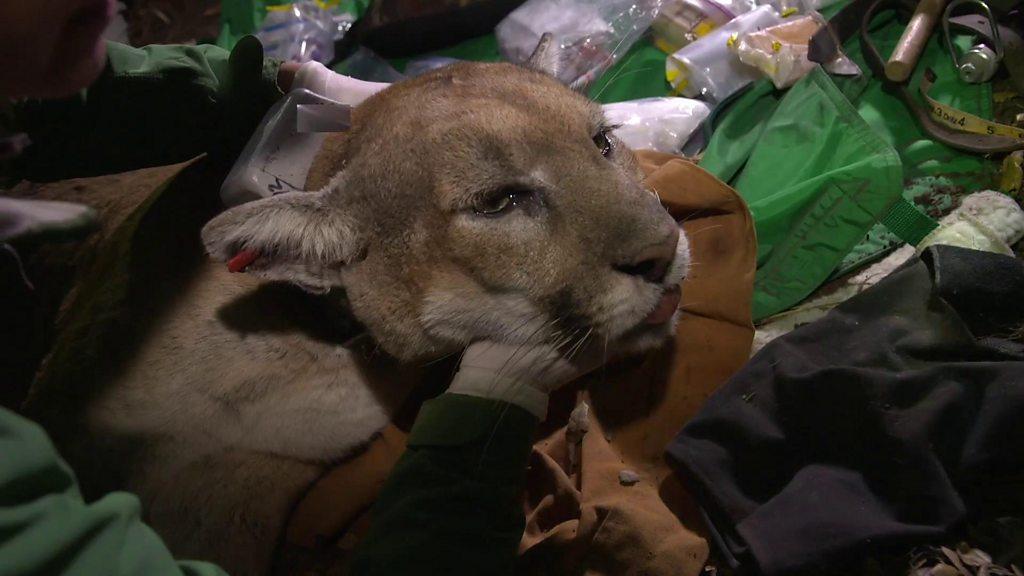
- Published29 August 2021
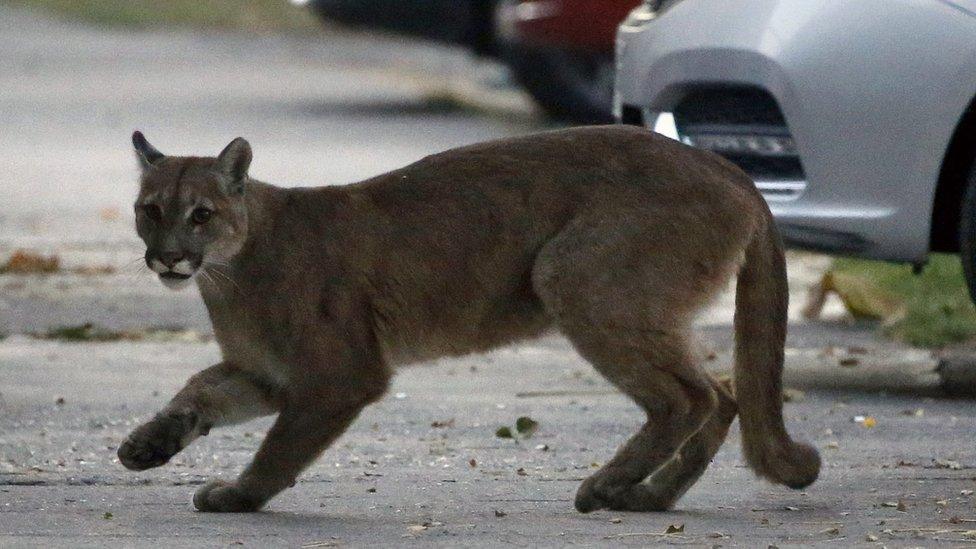
- Published14 October 2020
